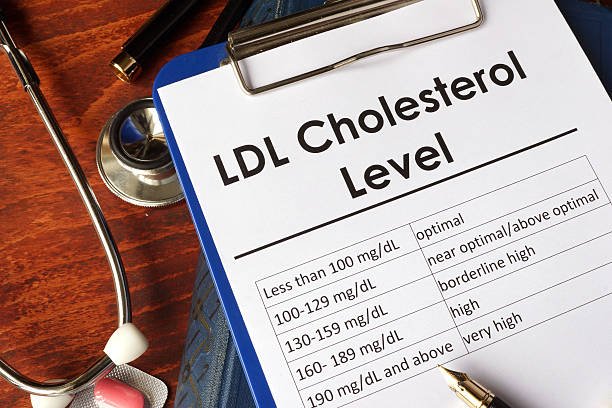
There is No Worst, Only Worse! Cholesterol Goes Bad, Lipoproteins are Responsible!
People always have all kinds of negative associations when it comes to cholesterol, but is this an attempt to incriminate? In fact, there are not only many types of cholesterol but also different functions. What we often hear about as “good” or “bad” cholesterol actually has nothing to do with cholesterol itself. This article reveals the relationship between good and bad cholesterol and you.
What is cholesterol?
Cholesterol is a lipid molecule with a thick, waxy texture. Since cholesterol is one of the components that make up cell membranes, hormones and bile, it can be found everywhere in the body and is an essential compound for the human body.
The relationship between cholesterol and lipoproteins
Cholesterol is transported by lipoproteins
Cholesterol itself is not hydrophilic, so if it is to provide resources to cells throughout the body, it relies on the help of lipoproteins. Lipoproteins encapsulate cholesterol and enter the blood circulation. Based on density differences, lipoprotein types can be roughly divided into chylomicrons, very low density lipoproteins (VLDL), intermediate density lipoproteins (IDL), low density lipoproteins (LDL), and high density lipoproteins (HDL). These 5 kinds.
The difference between high-density and low-density cholesterol
Among them, low-density lipoproteins are highly related to atherosclerosis and cardiovascular disease. Although low-density lipoproteins can help transport cholesterol, they may also be deposited on the arterial walls, causing oxidation and inflammation, and gradually forming fatty plaques.
Once the number is too high, it will accelerate the formation of fatty plaques and block blood vessels, or cause blood clots to block blood vessels due to the rupture of unstable fatty plaques. Both of these conditions will increase the risk of coronary heart disease and myocardial infarction, thus making LDL has earned the name “bad cholesterol.”
Of course, the human body also has a corresponding mechanism – high-density lipoprotein, whose main function is to recover low-density lipoprotein deposited in the arteries and transport it back to the liver for metabolism. Therefore, when we perform blood fat testing, the concentration of LDL and HDL in the human body is also one of the indicators to determine whether a person is in a high-risk group for cardiovascular disease.

It’s not just LDL that’s “bad”
After understanding the relationship between lipoproteins and cholesterol, you will find that the so-called good and bad cholesterol may actually need to be changed to good and bad lipoproteins, because without lipoproteins, cholesterol cannot attach to the inner wall of blood vessels, and there is no way to There is no such thing as good or bad when it comes to providing cell utilization.
However, in addition to bad cholesterol, did you know that there is also “super bad cholesterol (sd-LDL)”?
sd-LDL can be called “small particle low-density lipoprotein” in Chinese. It is actually a type of low-density lipoprotein. Although we usually talk about LDL, it can still be subdivided into LDL particles of different sizes, and sd-LDL It is the type of low-density lipoprotein that is particularly easy to penetrate into the blood vessel wall and undergo oxidation.
There is also a substance called Remnant-like particle cholesterol (RLP-C), or Remnant lipoproteins (RLP). They come from partially decomposed chylomicrons and very low-density lipoprotein. At this time, most triglycerides have been decomposed by liver lipolytic enzymes, but the remaining undecomposed residues contain a large amount of cholesterol and are present in the blood. in circulation. Some studies suggest it may also be linked to atherosclerosis.
Since the presence of these two lipoproteins is so high, why are sd-LDL and RLP not included in routine blood fat examinations? In fact, it is because the research on low-density lipoprotein has been developed for a long time, the number of studies is more than that of the other two, and the cost of testing low-density lipoprotein is also lower. Therefore, high low-density lipoprotein is currently used as the main criterion.

How to reduce low-density lipoprotein LDL-C?
The necessity of low-density lipoprotein was mentioned earlier, but this does not mean that we do not need to pay attention to the LDL concentration in the body. Especially for people with poor lifestyles and high risk of heart disease, we should start from daily routine!
Blood lipids test
That’s the cholesterol test, which also includes other blood fats, such as triglycerides. The results of general blood fat testing can provide values for total cholesterol concentration (TC), triglycerides (TG), low-density lipoprotein cholesterol (LDL-C), and high-density lipoprotein cholesterol (HDL-C). If you If you find that these numbers are outside the normal values (usually marked with red letters), then you may need to improve the concentration of blood fat in the body and increase the proportion of good cholesterol in the body, that is, increase high-density lipoprotein.
How to avoid high cholesterol?
When the high-density lipoprotein cholesterol (HDL-C) in the body is higher, there is a chance that the blood vessels can be kept smooth, the blood vessels are expanded to allow better blood flow, and the chance of atherosclerosis is lower, and it is more helpful to remove blood from the blood. Reducing other types of bad cholesterol has many benefits.
In addition to patients with metabolic syndrome, the HDL cholesterol in the body generally tends to be slightly lower than the normal value and needs to consider auxiliary drugs. Others should actively use the following 4 tips to increase good cholesterol and combat bad cholesterol. cholesterol!
- Quit smoking:
Smoking not only damages vascular endothelial cells, making atherosclerosis more likely to occur, but also reduces HDL concentration. - Moderate exercise:
Lack of exercise will reduce HDL concentration, while exercise can increase the size of LDL particles in the body. Large-particle LDL is less harmful to cardiovascular disease than small-particle LDL. - Weight control:
Being overweight may have a wide range of effects, including overeating, less exercise, higher risk of diabetes, etc. Under conditions of high blood sugar, the activity of liver lipolytic enzymes will be reduced, leading to changes in low-density lipoprotein. many. - Avoid a high-cholesterol diet:
Reduce your intake of saturated fats and trans fats, and choose unsaturated fatty acid oils such as olive oil for cooking. Moderate intake of fish and low-salt nuts 2 to 3 times a week can improve the absorption of good cholesterol and reduce bad cholesterol.












